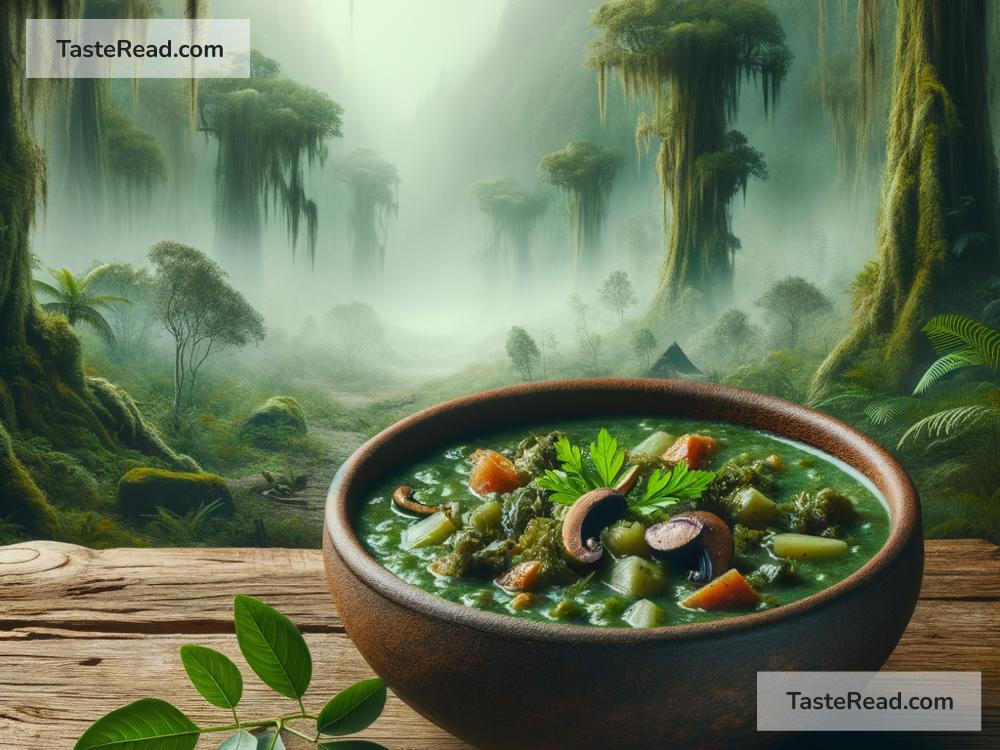The Hidden Symbolism of Dagobah Stew in Star Wars
The Star Wars saga is full of action-packed battles, wise Jedi teachings, and epic journeys. But sometimes, the most important messages come from small, seemingly insignificant things. One of those overlooked details is Dagobah stew, a strange, murky dish that Yoda cooks and serves to Luke Skywalker in The Empire Strikes Back. At first glance, it seems like nothing more than a gross, unappealing meal, but if we look deeper, it holds a hidden symbolism that connects to Luke’s journey and the larger themes of Star Wars.
What is Dagobah Stew?
For those who might not remember, Dagobah stew is the food Yoda prepares when Luke comes to the swampy, mysterious planet Dagobah to train as a Jedi. Made from whatever ingredients Yoda found on Dagobah, the stew doesn’t exactly look appetizing. Luke takes one bite and calls it “gross,” rejecting it almost immediately.
But to Yoda, the stew represents sustenance and survival. Living alone on Dagobah with no luxuries, Yoda has made do with the natural resources of the swamp. To Luke, who grew up on Tatooine and has known a different way of life, the stew feels foreign and unappealing. This small moment reveals a lot about how Luke and Yoda approach life—and it sets the stage for Luke’s Jedi training.
Symbol #1: Humility
The first layer of symbolism in Dagobah stew is humility. Yoda is one of the wisest and most powerful Jedi in the galaxy, but when we meet him in The Empire Strikes Back, he’s living in a simple, swampy hut, eating plain food that he makes himself. He doesn’t have wealth, fancy possessions, or servants—just himself and what the planet offers.
Yoda’s choice to live a humble life reflects one of the core teachings of the Jedi: letting go of greed, pride, and superficial desires. For Yoda, Dagobah stew isn’t just food—it’s a symbol of contentment with simplicity. This stands in contrast to Luke’s initial mindset when he arrives on Dagobah. Luke seeks adventure, glory, and power, but the stew teaches him that being a Jedi is about humility, not greatness.
When Luke rejects the stew, it shows that he’s still clinging to his old way of thinking. He expects something better, something tastier, because he hasn’t yet learned the importance of accepting what life gives him.
Symbol #2: The Struggle to Adapt
Dagobah stew also symbolizes Luke’s struggle to adapt to the Jedi way of life. The murky, mysterious stew is a reflection of Dagobah itself—a dark, challenging place where nothing feels comfortable or easy. This mirrors Luke’s personal journey as a Jedi trainee. His training on Dagobah is a time of learning hard lessons, facing his fears, and breaking away from his impatient, reckless tendencies.
Just as the swampy environment of Dagobah forces Luke out of his comfort zone, so does the stew. The stew isn’t supposed to be delicious or enjoyable—it’s supposed to fuel Luke’s body while he focuses on the greater task of becoming a Jedi. By rejecting the stew, Luke momentarily shows his resistance to the challenging environment and teachings of Dagobah.
In a way, the stew is part of Yoda’s lesson. To be a Jedi, one must let go of personal desires and adapt to the situation at hand, no matter how uncomfortable or unfamiliar it might be.
Symbol #3: Inner Strength
There’s another layer of meaning to Dagobah stew: building inner strength. Just as the swampy meal nourishes Luke’s body, Yoda’s teachings nourish his mind and spirit. Both the stew and the lessons feel unpleasant at first, but they are exactly what Luke needs to grow stronger.
This idea connects to the broader theme in Star Wars about enduring challenges to find strength. Whether it’s Luke training in the swamp, Rey scavenging for survival in The Force Awakens, or Anakin overcoming obstacles as a child in The Phantom Menace, the saga emphasizes the importance of enduring hardships to grow as a person.
Dagobah stew symbolizes this concept. Luke must accept uncomfortable or undesirable things—both the stew and the experience of Jedi training—to reach his full potential.
Symbol #4: Connection with Nature
Finally, Dagobah stew reminds us of the Jedi’s connection with the Force and nature. Yoda makes the stew using Dagobah’s natural resources, showing how he relies on the world around him rather than artificial or synthetic solutions. This reflects the Jedi philosophy of living in harmony with the universe and trusting the Force.
Dagobah itself is an untamed wilderness, rich with life and energy, and the stew is a direct product of that environment. By eating it, Luke takes in the essence of Dagobah and connects more deeply to his surroundings, just as he learns to connect with the Force through Yoda’s guidance.
The Bigger Picture
Though Dagobah stew is just a quick moment in The Empire Strikes Back, it carries a lot of hidden meaning. It reflects the themes of humility, adaptation, inner strength, and harmony with nature—all key lessons that Luke must learn to become a Jedi. It reminds us that even small, seemingly unimportant things can reveal deep truths—and that Star Wars has layers of storytelling that go far beyond lightsaber duels and epic battles.
So, the next time you watch The Empire Strikes Back, don’t dismiss the swampy little stew too quickly. It’s more than a weird dish; it’s a symbol of the difficult yet rewarding journey that every Jedi must face. And, like Luke, we all have our own “Dagobah stew” moments—times when we struggle, adapt, and grow into stronger, wiser versions of ourselves.


